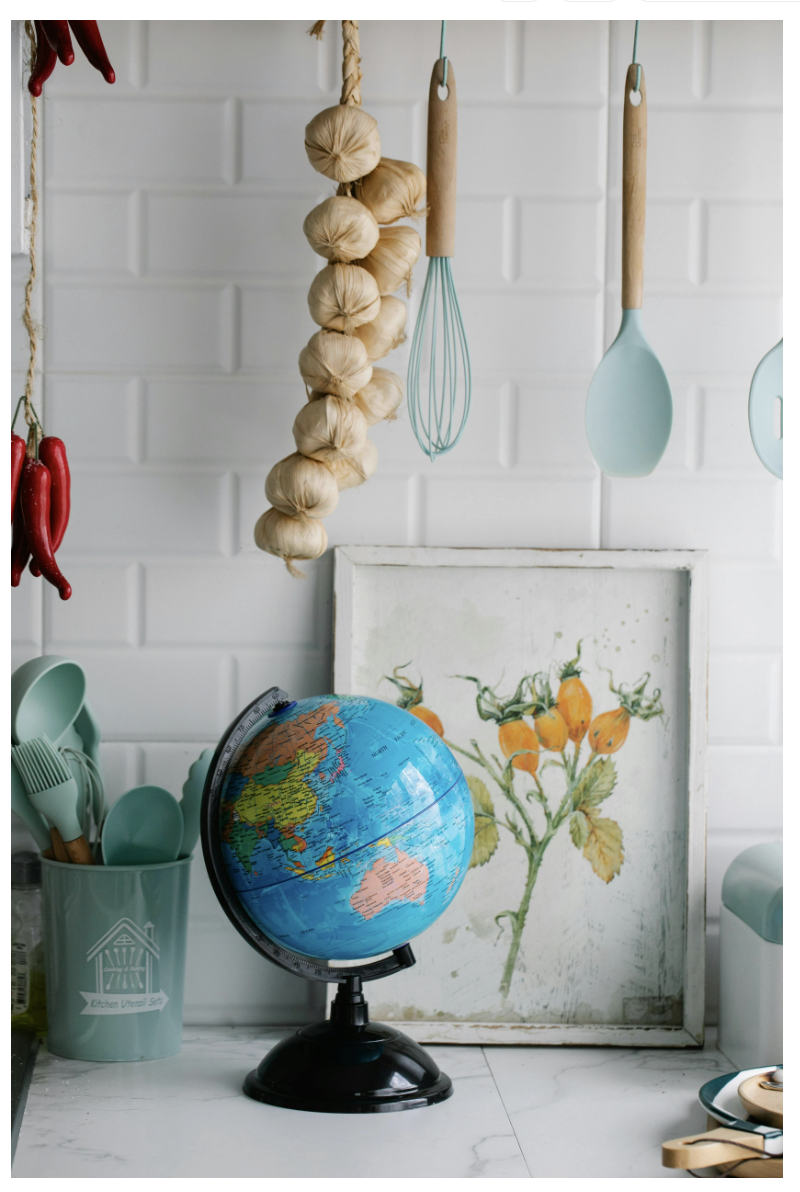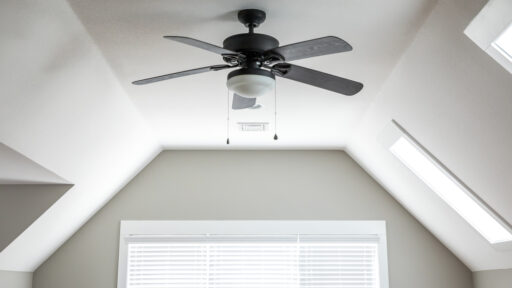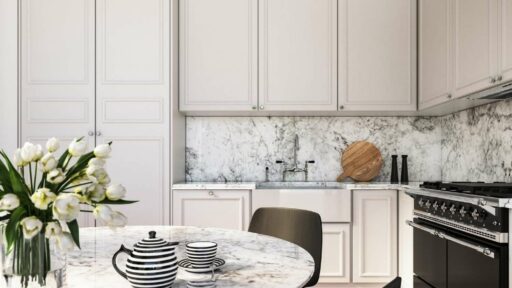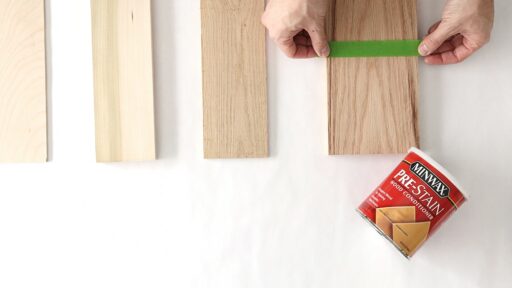The kitchen is rarely neutral. Blades tap in rapid rhythm, garlic drifts fragrant through the air, and the space hums with practiced motion. Still, for all its vitality, the kitchen is left unadorned—shaped more for use than for display.
That absence matters. Visual details steer emotion, and emotion shapes how food is prepared, shared, and remembered. Kitchen decor is not filler; it injects color, asserts personality, and builds an atmosphere suited equally to work and rest.
Choosing the Right Art for Your Kitchen Vibe
Kitchen wall art is not interchangeable with living room decor. Grease, steam, and frequent traffic demand materials and styles that withstand proximity to heat and motion. Art should ultimately echo the spirit of the kitchen itself.
A traditional kitchen glows with character. Imagine weathered still-lifes, time-worn botanical sketches, or family recipes framed as treasures.
A minimalist kitchen finds its beauty in restraint—soft tones, clean lines, and a balance where every element is intentional.
For modern or eclectic spaces, bold posters, witty typography, or unexpected photography set the tone with striking character.
The principle? Coherence with the kitchen’s tempo. Art that fights against the rhythm of the room feels imported rather than integrated.
Top Kitchen Wall Art Ideas to Consider
If you want to add new energy to your kitchen walls, there are many ideas to match your style and make your home feel special. A common favorite is artwork that features food or cooking themes.
Food & Culinary-Themed Art
The most direct approach: place food on the walls as well as the plate. Decorative choices—such as antique fruit crate labels, contemporary espresso cup artwork, or artistic herb drawings—visually connect to the kitchen’s central role.
These elements transform everyday cooking items into visual symbols, reinforcing how the room’s appearance directly relates to its main function.
Style | Example Piece | Benefit |
|---|---|---|
Vintage advertising prints | 1920s olive oil poster | Adds history and charm |
Minimalist illustrations | Single-line drawing of a wine glass | Keeps look modern and clean |
Hyperrealistic photography | Close-up of citrus or bread texture | Introduces texture and vibrancy |
1. Typography and Quotes
Typography transforms walls into commentary. A framed maxim-“But first, coffee”-may sound pedestrian, but the right font and print quality turn words into aesthetic anchors.
Script fonts create intimacy; bold sans-serifs establish clarity and modernism. The resonancy lies in both what is said and how it is typographically constructed.
2. Botanical and Nature Prints
Botanical prints recall the origins of food itself. Herbs rendered in watercolor or minimalist linework echo the kitchen garden and create continuity between natural ingredients and culinary outcome.
Green imagery also tempers the steel and stone common in modern kitchens. Research on biophilic design shows that visual references to nature reduce stress and improve concentration—valuable in a room of sharp knives and hot stoves.
3. Abstract or Expressionist Art for a Modern Twist
Abstract art does not narrate; it provokes. In kitchens dominated by stainless steel and angular cabinetry, a bold color field or fragmented composition introduces softness or tension.
For homeowners who prefer kitchens as social spaces rather than utilitarian labs, abstract art signals sophistication and intent.
4. Framed Vintage Posters or Recipe Cards
Culinary history is easily archived on the wall. Old recipe cards handed down from ancestors and thoughtfully framed serve as both treasured family keepsakes and works of art. Historic posters featuring chocolate, soda, or classic wine ads as windows into past culture. They transform the kitchen into a timeline rather than a showroom.
Creative Display Tips

The utility of art depends on placement as much as content. Arranging your art in creative ways can make even simple pieces stand out and bring real energy to your kitchen.
- Gallery Walls
Combine mismatched frames and styles into a deliberate cluster. Position above a breakfast nook or sideboard for maximum effect.
- Open Shelving Integration
Lean small framed prints against stacked dishes or cookbooks, softening utilitarian lines.
- Oversized Anchors
A single large abstract piece on a bare wall delivers a stronger impact than a grouping of smaller works.
- Practical Materials
Framed under glass or laminated, prints withstand heat and splatter more effectively than untreated canvas.
- Consider Scale
Too small disappears into cabinetry; too large overwhelms. Charting the layout before hammering nails prevents visual noise.
Small Space and Budget-Friendly Options
Not every kitchen accommodates large canvases. Constraint produces invention.
Printables and digital downloads offer low-cost access to high-quality art. There are many websites where you can find printable kitchen wall art that you can download and scale to fit any frame.
Options include sites with free or editable posters that feature food art, inspirational quotes, and fun designs. These digital files make it easy to add personality to your kitchen, no matter your budget.
Handmade collages use everyday items like recipe cutouts, wine bottle labels, or plant illustrations. They create personalized wall art at minimal cost.
Removable wall decals appear in designs ranging from coffee cups and kitchen tools to abstract patterns. Because they lift away cleanly, they’re well suited for rental spaces.
Chalkboard paint creates versatile wall sections. These painted areas function as menu planning boards and changeable artwork displays.
Another budget-friendly trick: rotate seasonal art. By swapping out prints every few months, you refresh the atmosphere without buying permanent decor. Store off-season pieces in a flat folder for easy reuse.
Bullet Summary of Budget Options
- Digital Downloads
Low-cost art you can print to any size or frame, endlessly adaptable.
- Collages
Handcrafted from recipes, clippings, or labels that adds story and personality.
- Decals
Peelable stickers with attractive patterns. These remove easily, perfect for renters or short-term customization.
- Chalkboard Walls
Dual-purpose surface for notes, menus, or evolving sketches.
Defining Kitchen Through Art
Art in the kitchen is not an indulgence but a corrective to sterility. A space defined by routine—chop, saute, boil—gains depth from visual pauses that evoke flavor, culture, memory, and wit.
Vintage posters, bold abstracts, or botanical prints give the kitchen a clearer sense of character. It signals that cooking is not mere labor but ritual. With the right choices, even the most functional kitchen acquires aesthetic resonance—a place not only for sustenance but for the presence of art itself.
Kitchen design blends function with imagination, turning a practical room into a reflection of self. It shows that nourishment lies not just in food, but also in the shapes, colors, and textures surrounding everyday life.








